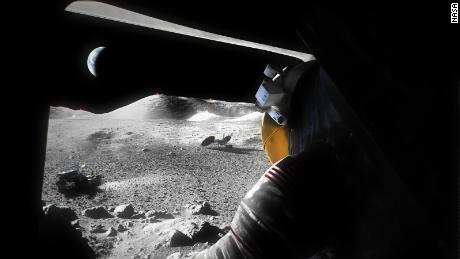Nelson said the figure is 8% higher than applicable federal spending levels, or credit counts as of fiscal year 2022.
“It’s more than just a number, a statistic, or a fact of what the president’s budget request represents,” Nelson said in a statement.
“This budget reflects the Biden-Harris administration’s confidence in the extraordinary workforce that makes NASA the best place to work in the federal government,” Nelson said. “It is an investment in the companies and universities that partner with NASA in all 50 states and the high-paying jobs they create. It is a signal to support our missions in a new era of exploration and discovery.”
Artemis’ mission to get the lion’s share
The bulk of the $26 billion budget request will be allocated to the Artemis program.
The budget allocated $7.6 billion for deep space exploration and $4.7 billion for the development of exploration systems.
Artemis is the program that will not only return humans to the Moon and create a sustainable and long-term presence on the Moon, but will also prepare NASA for the first human exploration of Mars.
“Our goal is to apply what we learned from living and working on the moon and then move on to the solar system,” Nelson said. “Our plan is for humans to be able to walk on Mars by 2040.”
“Do you remember what happened after the Apollo program? You had several generations of engineers, scientists, and technicians who all came out as a result of extraordinary work on Apollo,” Nelson said. “But now the Apollo generation has passed the torch on to the generation of Artemis. And this new generation is ready to push the boundaries of what we know is possible.”
Satellite surveillance and space technology
The budget request also includes $2.4 billion in funding for climate and weather monitoring, the use of satellites to monitor our planet and other research to create a better understanding of the climate crisis.
Nelson said the president’s budget would allow NASA to launch the Earth Information Center. The center, in collaboration with other agencies and partners, will monitor greenhouse gases and other conditions on Earth and combine data from satellites and telescopes to measure our planet’s water, land, ice and atmosphere.
Given NASA’s ongoing commercial partnerships, the agency has requested $1.4 billion to research and develop space technology that can lower costs, improve mission capabilities and create more jobs for the U.S. commercial space industry.
“Our collaboration with industry has already made it possible for more scientific research to take place, and in December NASA signed agreements with three US companies to develop designs for space stations and other commercial destinations, first in LEO and who knows,[LEO].”
Noting that NASA’s first “A” stands for aviation, Nelson said $970 million of the budget will go to flight research that can improve aviation for everyone. This includes reducing the aviation industry’s impact on the global climate and helping develop next-generation aircraft that will be safer, smoother, cleaner and quieter.
Finally, there is $150 million to support NASA’s Office of Science, Technology, Engineering, and Math Sharing, which provides further support for educational efforts and activities, particularly in underserved areas.

“Thinker. Coffeeaholic. Award-winning gamer. Web trailblazer. Pop culture scholar. Beer guru. Food specialist.”







More Stories
Comet Tsuchinshan-Atlas is ready to shine this fall
Sonos isn’t bringing back its old app after all
Indiana Jones and the Great Circle is coming to PS5 in spring 2025